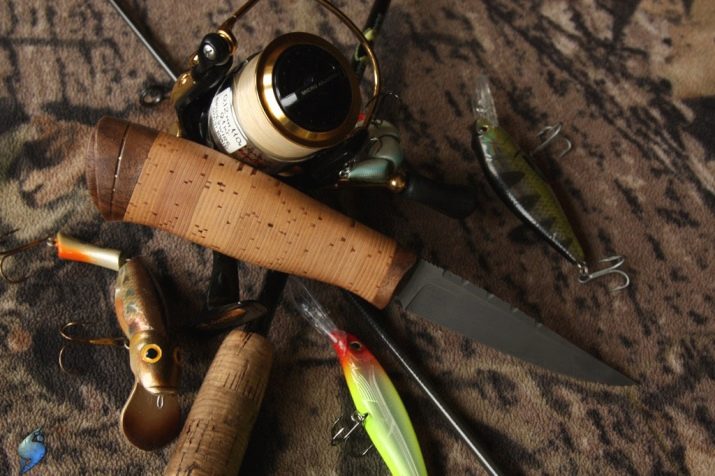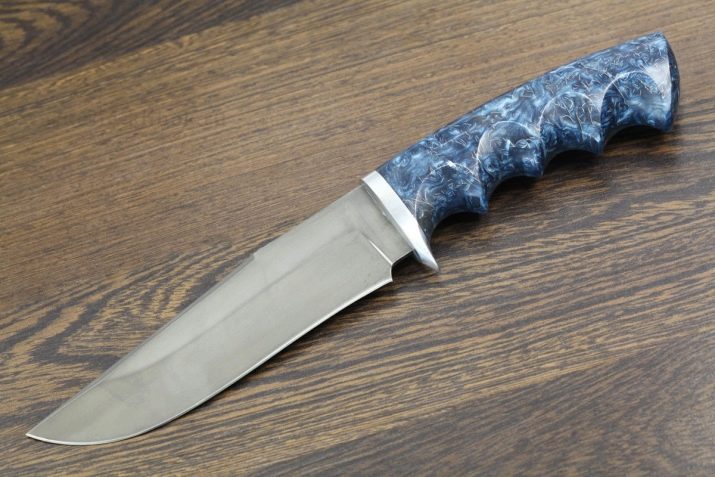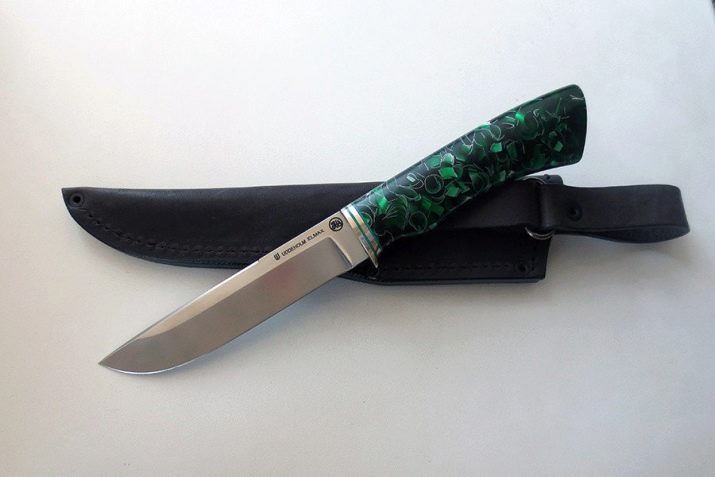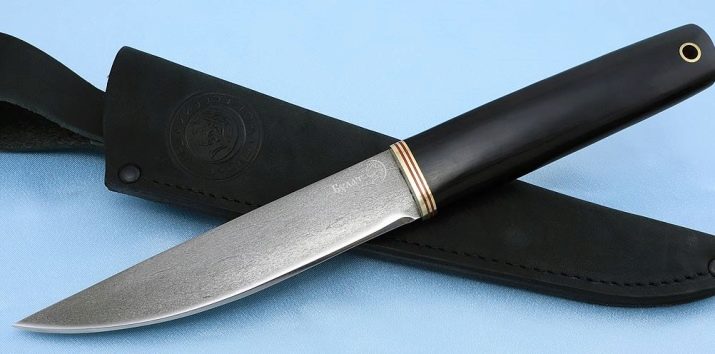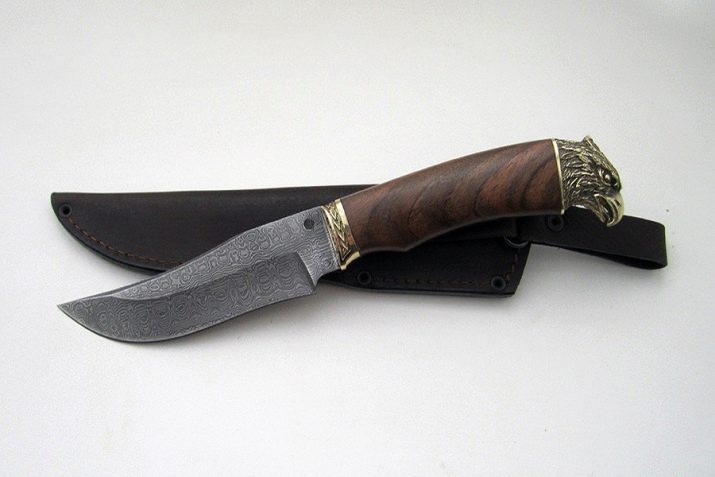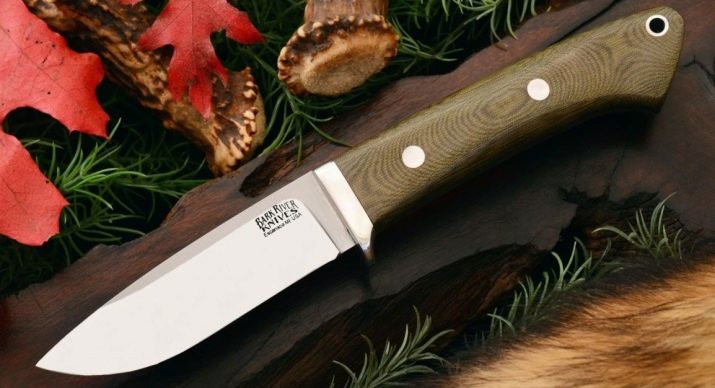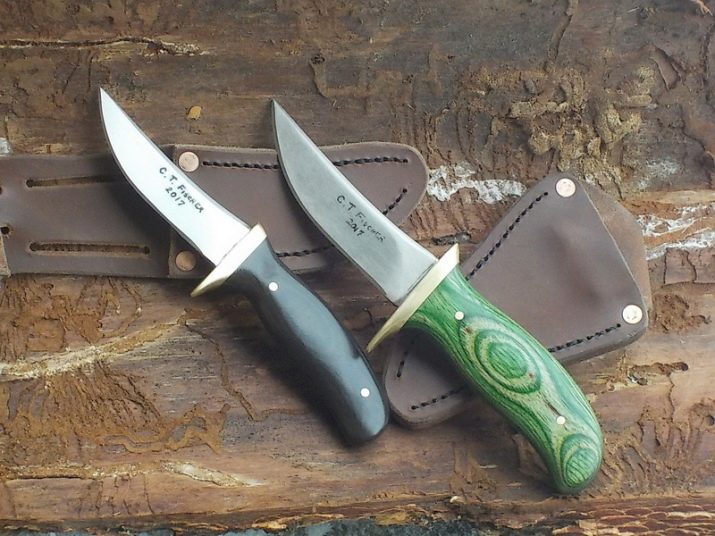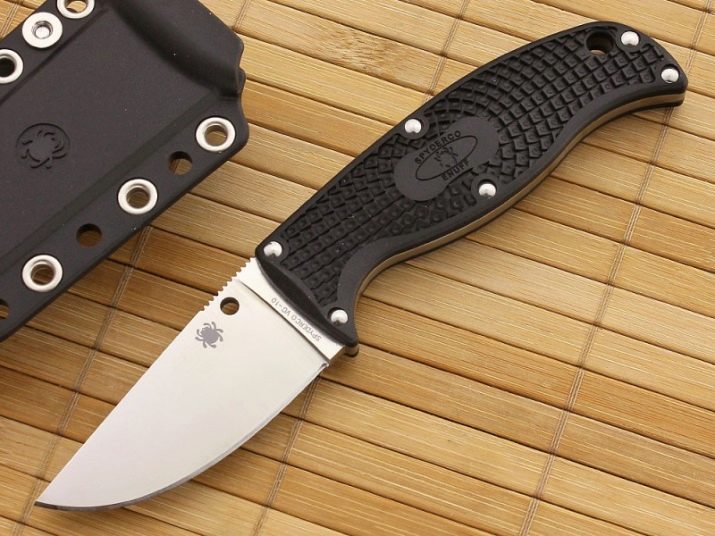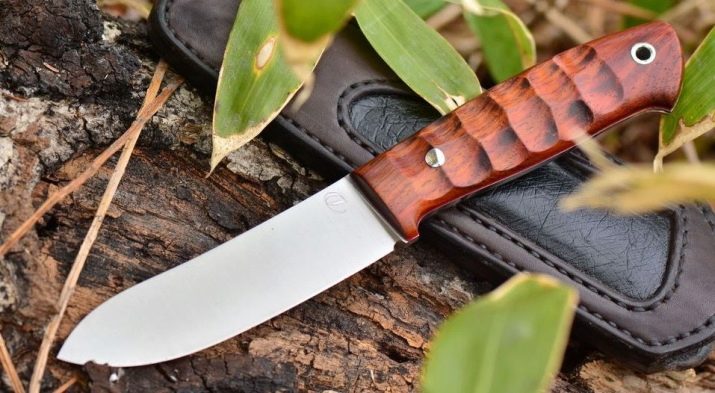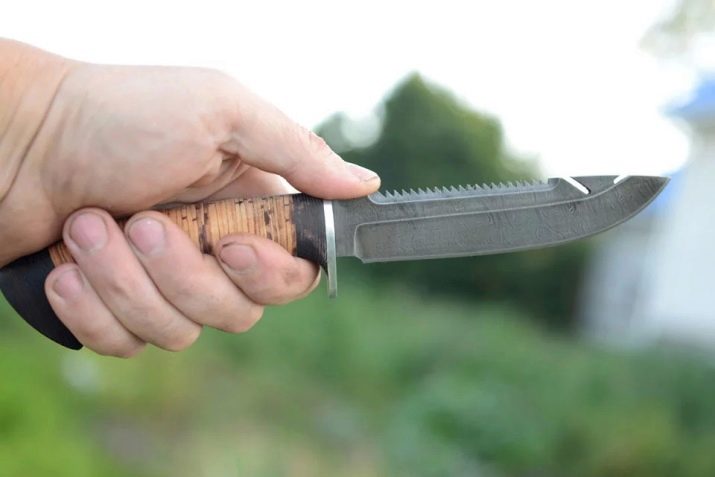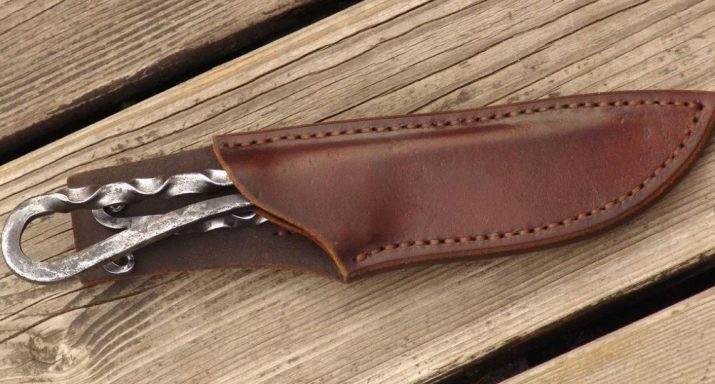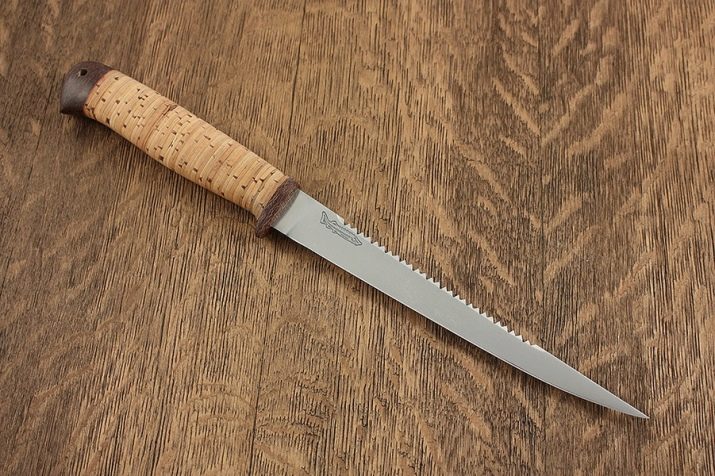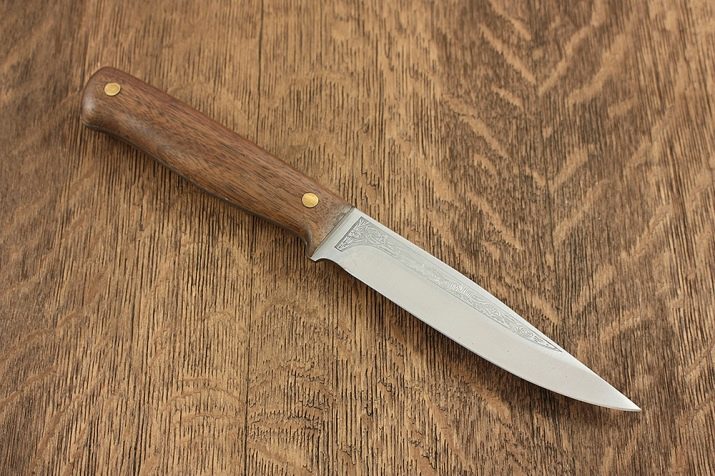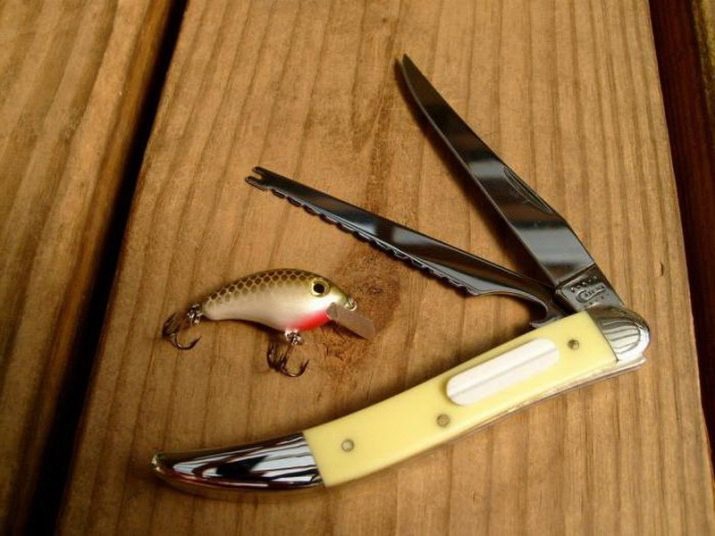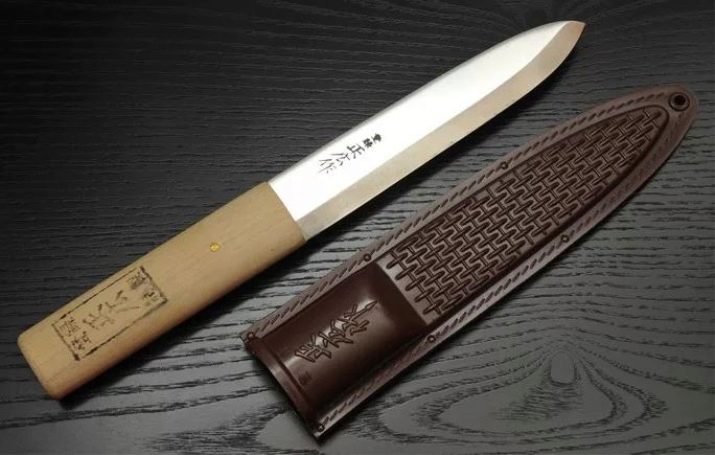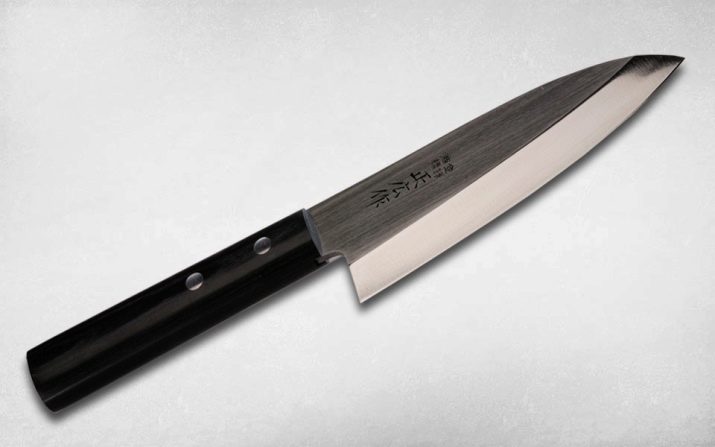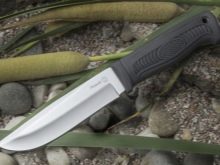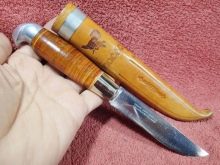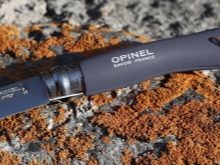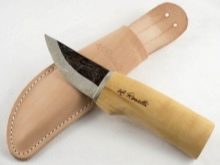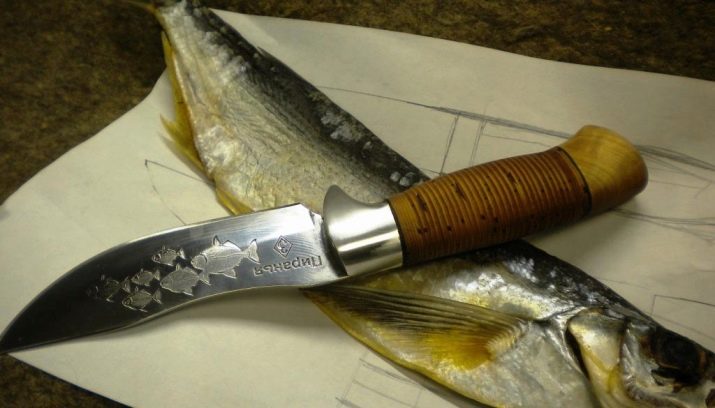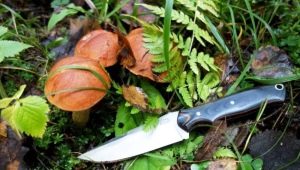Knives for fishing: types and subtleties of choice
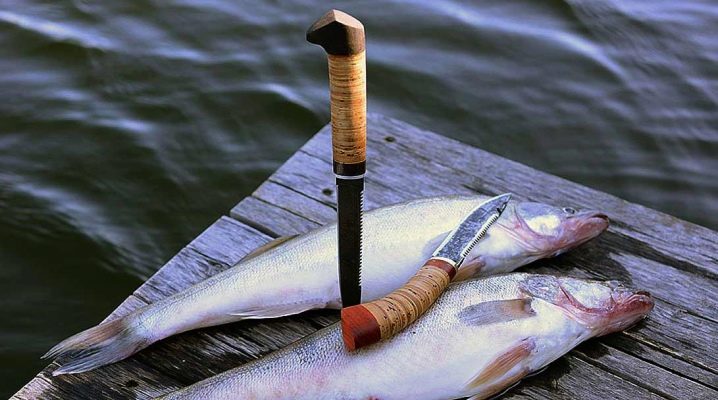
In fishing, besides fishing rods, the angler needs a knife, and not some kitchen or pen-chin, but a special sharp tool that cuts fish, cuts food, and cuts fishing line.
Main characteristics
Even primitive people used stone knives, then our ancestors learned how to produce steel blades. And today, living in the age of all kinds of technologies, we still use knives in many areas of our business. Fishing is one of them. Some believe that a kitchen knife is suitable for day fishing. And if you look at it from the other side - Excellent fishing knife can be useful in everyday life, in the household.
A fishing knife is a blade of wide functionality. As an assistant, he is involved in catching and cutting fish, making a bonfire, cutting food, and many other things. The material from which the knife is made must respond well to an environment with high humidity.
Many believe that there are no universal knives. Each fisherman himself knows the tasks he has to face while fishing, and takes several cutting items with him for different purposes. Most often, a classic and a cutting knife is included in the fishing kit, sometimes a multitool is added.
Depending on the destination, the fishing knives may have a blade length of up to 15 cm and weigh about 250 g. But most often the fishermen can do with a smaller tool - a blade of about 12 cm and weighing 150 g. The blade plane width is 2.5 -3.0 cm. This knife is considered optimally balanced, ergonomic, easy to hold in your hand, and produces cutting action without much effort.
Requirements
A large variety of fishing knives, rather, makes it harder to choose than to facilitate it. After examining the requirements for such tools, and comparing them with their tasks, you can make the right choice. We will understand in stages. First, find out what should be the material for the manufacture of blades.
Material
The steel blade of a fishing knife must have optimal hardness and be anti-corrosion. The recommended hardness is endowed with steel grades from 55 to 60 HRC. If the steel is softer, the cutting edge will often have to be sharpened. A blade that is too hard loses its flexibility and can break on impact, and it is also difficult to sharpen it in field conditions. Ligatures of various alloys affect the corrosion resistance. The more carbon compounds in the metal, the more corrosive it is. To create blades using different variants of alloys.
- Carbon. They have to be sharpened often, but they easily react to abrasives, in field conditions the process is easy. The blade is quite flexible, it will not break. Steel is susceptible to corrosion, besides absorbing organic matter, delaying odors on the blade.
- Alloyed. They have a beautiful appearance, keep blades sharp longer, are less susceptible to rust, and are easy to maintain. Blades of this steel can not boast of special urgency.
- Powder. The metal is very plastic, with a homogeneous structure. Encompasses the anti-corrosion properties of alloyed and comfortable performance qualities of carbon steel. Powder blades require special care, they are polished and treated with gun oil.
- Bulat. The metal has a hardness of 64 HRC, slightly superior to alloy steel. The cutting edge is kept sharp for a long time. The blade is easy to sharpen, not chipped. The perfect cut is achieved due to the correct grinding angle. Blades do not require special care, look spectacular due to the characteristic pattern of steel.
- Damascus. Expensive products obtained by a complex method of manufacture. Steel is surprisingly strong and sharp, has good anti-corrosion properties.
Anglers prefer blades made of steel of medium hardness, they have a good sharpness of the blade and protection against rust. Sharpening easily recovers in extreme conditions.
Blade
The shape of the knife blade depends on the tasks for which it was made. It has a different cutting edge and cutting angle.
- Straight edge. The axis of the tip and the butt of such a product are the same.
- Drop-point. To reduce the weight of the knife, except for the main edge, a second cutting blade is produced. Either on the butt make a false blade.
- Trailing point. In long blades, the upper edge is significantly overestimated.
- Clip-point. It has a low upper edge, with a convenient cut for piercing.
- Skinner. The blade is endowed with a curved blade with a straight butt.
- Dagger. Two cutting edges converge on the edge of the blade, making perfect symmetry.
Some models for enhanced stiffness are produced with a dol (longitudinal groove). More often fishermen choose blades with a supply, sharpened at an angle from 40 to 50 degrees. This form of the knife makes it easy to cut even large fish.
Lever
The handle of the cutting tool should fit snugly and comfortably in the hand of the fisherman. When choosing, you should pay attention to the material, understand whether tactile sensations are comfortable enough. Natural handles made of wood, leather or birch bark are more pleasant to the touch than synthetic materials. But when cutting fish, they absorb and retain a specific smell. In this case, plastic and rubberized surface significantly benefit. In addition, synthetic materials are easier to care for.
If the choice is made in favor of plastic, you should pay attention to the sliding characteristics of the material. The knife should not fall out of wet hands, even wearing rubber gloves. Metal handles weight the tool and freeze to the hand in the winter. In winter, it is pleasant and warm to hold the wood product, but it requires constant care. Convenient for fishing rubber handles. Their minus can be considered only cracking in the cold.
Bone products are beautiful, comfortable and durable. But they are more expensive than any other models. Nowadays, they have learned how to make good polymer compositions, to which there are no complaints so far.
Sheath
The sheath is an important element in the design of the knife, they protect the blade from the effects of external atmospheric environment and protect others from careless handling of a sharp blade. Perfectly made sheaths emit a click when entering the blade. Such a latch prevents the knife from falling out. You should choose a material that will ensure reliable and long-term operation of the blade. Sheaths are made from the following materials.
- Leather. Looks expensive, noble and beautiful. When tanning leather, substances are used that can react with metal and cause corrosion. To avoid this, covers are laid with wooden slats.
- Kaydeks. Thermoplastic with a very beautiful structure, high strength. Connect the sheet of sheath grommets.
- Cordura. Polyurethane product with a hydrophobic impregnation based on nylon fabric. Products are designed for every taste, as they have an infinite variety of colors.
The sheath is equipped with additional straps, allowing them to attach to the belt.
Varieties
Fishing knives have different purposes, so they look different. We give the most popular types of blades for fishing.
- "Beluga". A large product made of steel grade 95X18 for cutting big fish. The knife has a guard that protects the hand from slipping. He is also endowed with sharpening on the butt, helping to knock down the scales of fish. The blade itself is narrowed, with straight descents.
- "Splinter." Universal knife model "angler-hunter", with low weight. It has a narrow blade - 1.8 cm, butt thickness - 2.4 mm. For the product used steel grade 100X13M.A small sharp blade with a short arm is able to gut fish of any size and cope with game.
- "Gudgeon". Light reliable product of medium size, steel grade 95X18. The cut edge comes from the middle of the blade width. The pointed blade is designed for cutting fish of any weight. The tool is maneuverable, it performs any work accurately and quickly.
- Shkerochny. The knife has similarities with Japanese products. It is endowed with a heavy handle, on the butt there is a small hook for ripping up the belly. It cuts and cuts fish easily.
- Folding. Universal knife with various blades and accessories that are hidden in the handle, so the tool cover is not needed. The folded model is safe, takes up little space, and can be carried in a pocket.
- Japanese fishing. This is a professional knife for cutting fish, it has excellent elasticity. It is used for any work with fish. Using the finest blade, you can easily separate the fillets from the skin.
Fishing knives are also classified as classic, cutting and sirloin.
- Classical meets the purpose of "fisherman-hunter", therefore, is considered universal. It is often used by tourists in hikes.
- Chopping knife appearance resembles a hatchet. The blade itself is not too long, has a thick butt. Suitable for butchering and planing fish.
- Sirloin A knife with a narrowed, slightly curved blade is intended not only for gutting fish. With it, the meat is easily separated from the skin and bones.
Top models rating
Fishing knives are widely represented on the market by Finnish, Chinese, American manufacturers. Russia also offers its models to the domestic buyer. Among our suppliers, products of companies are especially popular. "Kizlyar", "Nerpa", "Northern Crown", "Zlatoust". From foreign companies, Finnish products are supplied to Russian markets. Lisakki, Opinel, Roselli, Ahti. American - Buck, ColdSteel, Kershaw, and many others. Today you can buy a knife for every taste and from different brands.
How to choose?
Fishing knives are chosen for different purposes, sometimes they prefer whole sets to single models. They are good at fishing, hiking, picnicking, even in everyday life. A beautiful exclusive handmade knife is the best gift for any fisherman, especially if homemade leather or bark covers are included in the package. There is an opinion that knives cannot be given, but fishermen and hunters have their own views on these things.
Choosing a knife for himself, every fisherman himself knows what tasks he will have to perform. If you often have to gut and carve fish, buy fillet models. For the usual assistance to the fisherman, the classic version is sufficient.
When choosing pay attention to the following criteria.
- Steel should be of medium hardness, then the knife will not break from the blow, and will not require constant sharpening.
- You should not take fishing for carbon steel, such products rust from moisture.
- The best parameters of the blade: thin, narrow, flexible, with a straight blade and comfortable length.
- Butt will have to be of moderate thickness or thin, otherwise the knife will be too heavy.
- Slicer is better to have a medium size. For small ones, do not chop boughs, but it is difficult for large fish to clean the fish.
- Choosing the handle, pay attention to the comfortable holding it in your hand. It is important that it does not slip. And the material from which the handle was made, did not soak and absorb odors.
In addition to these requirements, you should pay attention to high-quality blade mounting and aesthetic appearance of the product. A good knife will find its application in fishing and in any other activity of its owner.
How to choose a fishing knife, see the following video.

